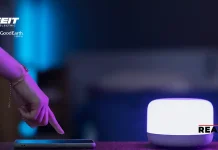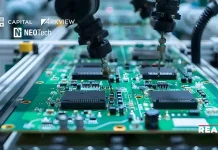Automotive plastics exterior parts have revolutionized the production of modern vehicles, offering flexibility, durability, and design possibilities. They have replaced metal and glass as primary materials, offering sleek body panels, intricate grilles, and stylish trim.
Due to their reduced weight, vehicles operate and handle better, giving drivers a more responsive and nimble experience. Of the 30,000 parts in a typical automobile, approximately half are composed of plastic. Extrapolate projects that by 2028, the global market for automotive plastics exterior parts will be valued at $28.01 billion. Let’s brush up on this multibillion-dollar sector.
What are Automotive Plastic Exterior Parts?
The term automotive plastics exterior parts encompasses the components and elements of an automobile’s exterior that are made from plastic. These exterior automotive parts are used in automobiles to serve functional and cosmetic needs.
Bumpers, body panels, grilles, outside trim pieces, mirror housings, and other visible exterior elements and components are examples of common automotive plastic exterior parts. Enhanced fuel efficiency, safety, and vehicle aesthetics are all made possible by the impact resistance, weight reduction, and design flexibility provided by these car exterior plastic parts.
What is the Role of Plastics in the Automotive Industry?
Among the several reasons for the increasing use of plastics in manufacturing automotive components is their potential to offer customers value in styling, safety, and other sustainable environmental benefits. For the automotive industry, many standards have been introduced with the use of plastics, as their lighter weight gives stylists and engineers greater freedom to develop concepts cost-effectively.
Earlier decades of automobile manufacturing showed zero utilization of plastics, but this has changed significantly in recent years. But with high performance, construction, agility, and functionality, applications of plastics have been diversified more than ever before. Currently, the production of cars uses between 100 and 150 kg of plastic. Put simply, the automotive sector is driven by plastics. This collaboration is possibly the result of sustainability as well.
The third-biggest plastic consumer sector is the automotive industry. Plastics give flexibility in component deployment and corrosion protection, which can extend the life of the vehicle. For the designers, they offer affordable options for automotive applications that are both aesthetically pleasing and practical. In the heyday of the automobile business, steel was the material of choice. But in the last four decades, plastics have become increasingly popular in automotive engineering and design.
Impact of Automotive Plastics Exterior Parts in the Automotive Industry
Plastic polymers are highly involved in the automotive industry, and they indeed deserve it. Here are the top impacts of automotive plastic exterior parts:
- Safety and Comfort: The safety features of plastics make them a must-have in the car manufacturing industry. For example, car bumpers are often made from impact plastics such as ABS, polycarbonate, and polypropylene. Airbags, seat belts, and child safety seats are made of plastic.
- Reduction of Weight: Weight is an important factor in the energy consumption of automotive parts. Plastic polymers, especially lightweight plastics such as polypropylene, have similar properties as metals and consume less energy. This helps in saving fuel and electric cars’ performance and efficiency.
- Energy Consumption Reduction: Plastic’s lightweight nature means that vehicles require less energy to operate. Additionally, the manufacturing process for plastics is efficient and requires low energy input. The recyclability of automotive plastics also helps save energy by reducing the need to produce materials from scratch.
- Cost-Efficiency: Plastics offer a cost-effective option for manufacturing automotive parts. For example, polycarbonate, which is commonly used in making headlights, costs less than glass. Furthermore, while there may be some setup costs initially, plastic fabrication becomes more cost-effective with continued use. This is especially noticeable in the reduced expenses for injection molding and CNC machining.
- Fostering Creativity and Innovation: Plastic fabrication techniques like CNC machining and injection molding have become popular due to their precision and ability to support large-scale production. Plastic polymers are incredibly moldable and durable, rivaling the properties of metals. Additionally, their softness eliminates the need for extensive machining operations, making them perfect for creating both prototypes and functional components.
- Seamless Component Integration: Plastics have a unique advantage when it comes to integrating components, thanks to their inherent properties. It’s easy to incorporate additives like UV inhibitors and pigments into plastics, enhancing their functionality, aesthetics, and overall attributes. This flexibility simplifies the task of improving mechanical properties such as stability and UV resistance.
Furthermore, the automotive industry benefits greatly from this adaptability, utilizing plastics for various applications. For example, glass fiber-reinforced polycarbonate is often used to make car bumpers, while non-reinforced polycarbonate makes supreme-quality headlamp lenses for cars. Different plastics are used to service the different needs of automobiles. Plastics for the automobile industry are a smart choice for manufacturers and car buyers looking for quality, cost, and performance.
Bottom Line
The use of automotive plastics exterior parts has totally revolutionized the auto industry, and for good reason. They offer a host of advantages in terms of design possibilities, performance, and even sustainability. These durable and lightweight parts have replaced traditional materials such as metal, allowing designers to have more creative leeway, improving fuel economy, and enhancing vehicle safety. As automakers strive to make their businesses more sustainable and efficient, automotive plastics exterior parts will continue to play an increasingly important role in shaping the future of auto design and production.
Browse More Posts:-
Telecom Cable Market
Electric Truck Market
Electric Van Market
Aerospace Materials Market




